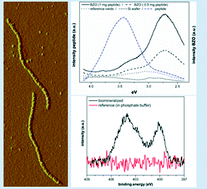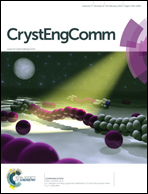Generation of luminescence in biomineralized zirconia by zirconia-binding peptides
Abstract
Current materials research is inspired from biomineralization processes, where proteins control the formation of inorganic materials under soft reaction conditions. The implementation of biomineralization principles is a promising approach to generate tailored material properties for developing applications and devices. The results show the direct link between inorganic-binding peptides, biomineralization and the generation of new materials properties. Peptides which specifically bind to yttria-stabilized zirconia are selected by phage display and analyzed with regard to their amino acid composition. Based on these results the peptide 6-3-06 (SWNNMGWLPTFG) is selected for the peptide-assisted synthesis, generating biomineralized zirconia-based (BZO) material with photoluminescent properties. The material characterization by means of X-ray photoelectron spectroscopy reveals the incorporation of the peptide in the inorganic phase. More important this specific structure gives rise to photoluminescence (PL) in the blue wavelength region (~2.7 keV) at room temperature which is mainly attributed to states in the band gap introduced by organic–inorganic interfaces. This PL property is exclusive to the BZO whereas samples mineralized in the absence of the peptide did not show PL. The data clearly demonstrate that by biomineralization new material properties for technical materials can be generated. Importantly, this approach can be generalized for other inorganic materials.


 Please wait while we load your content...
Please wait while we load your content...